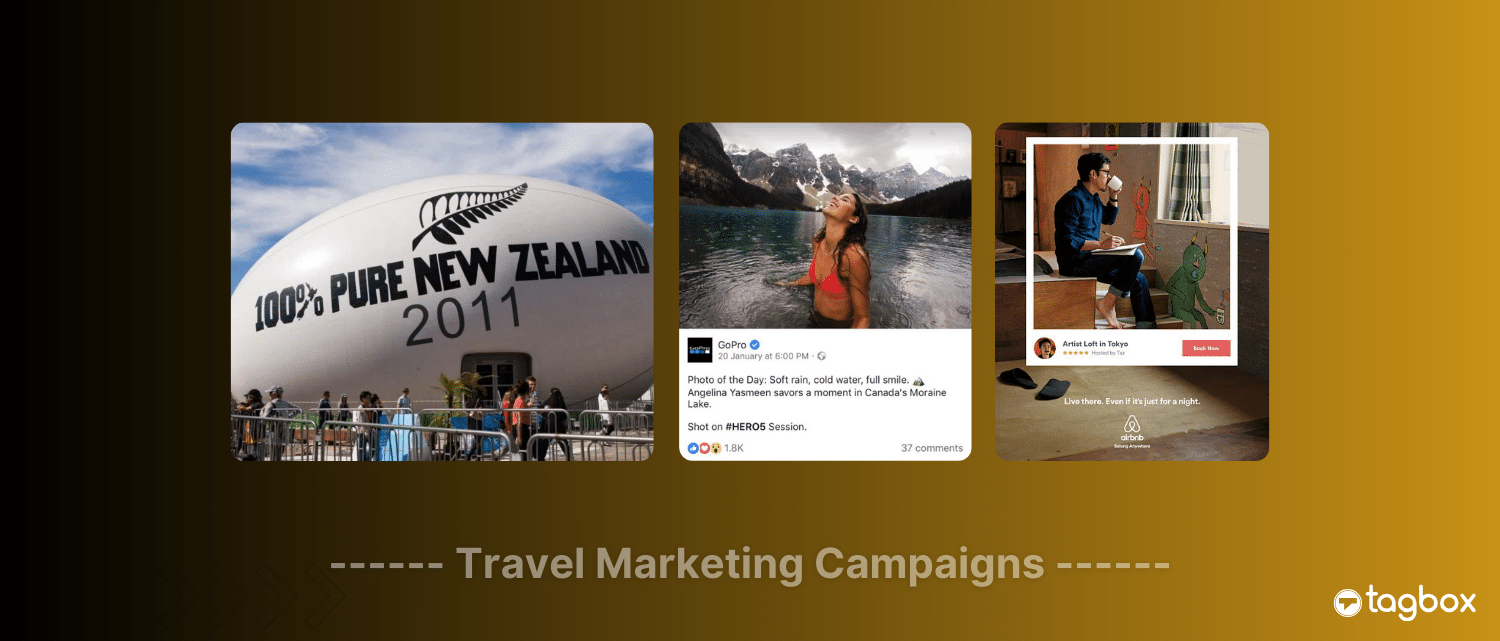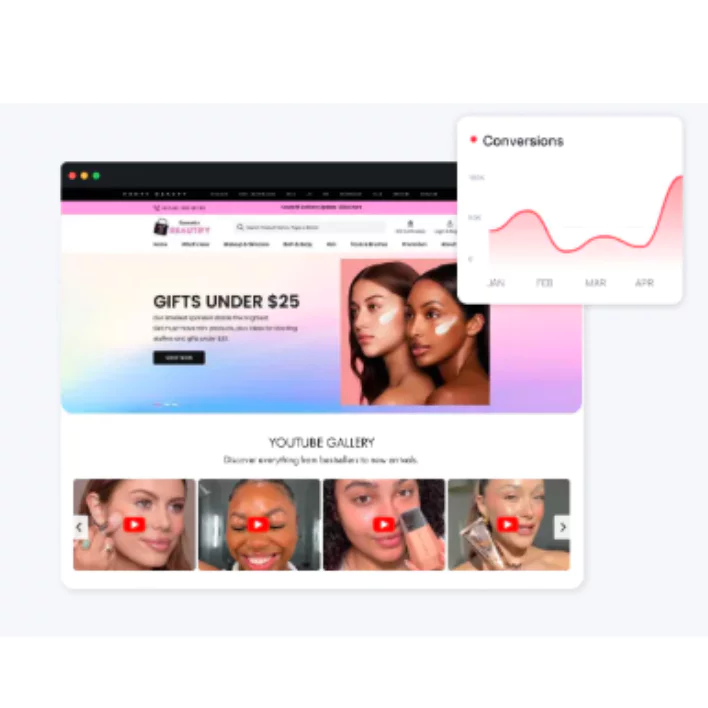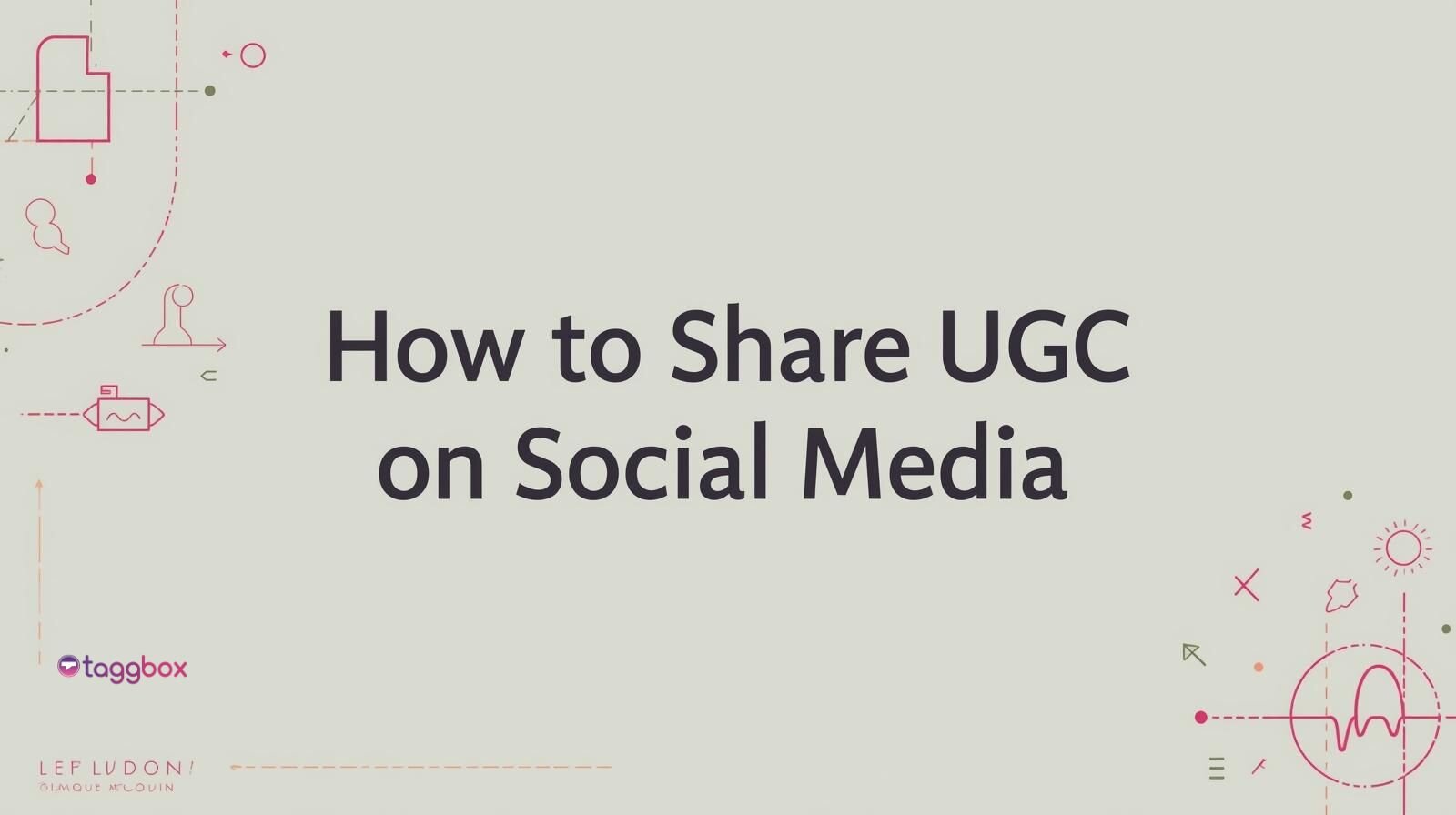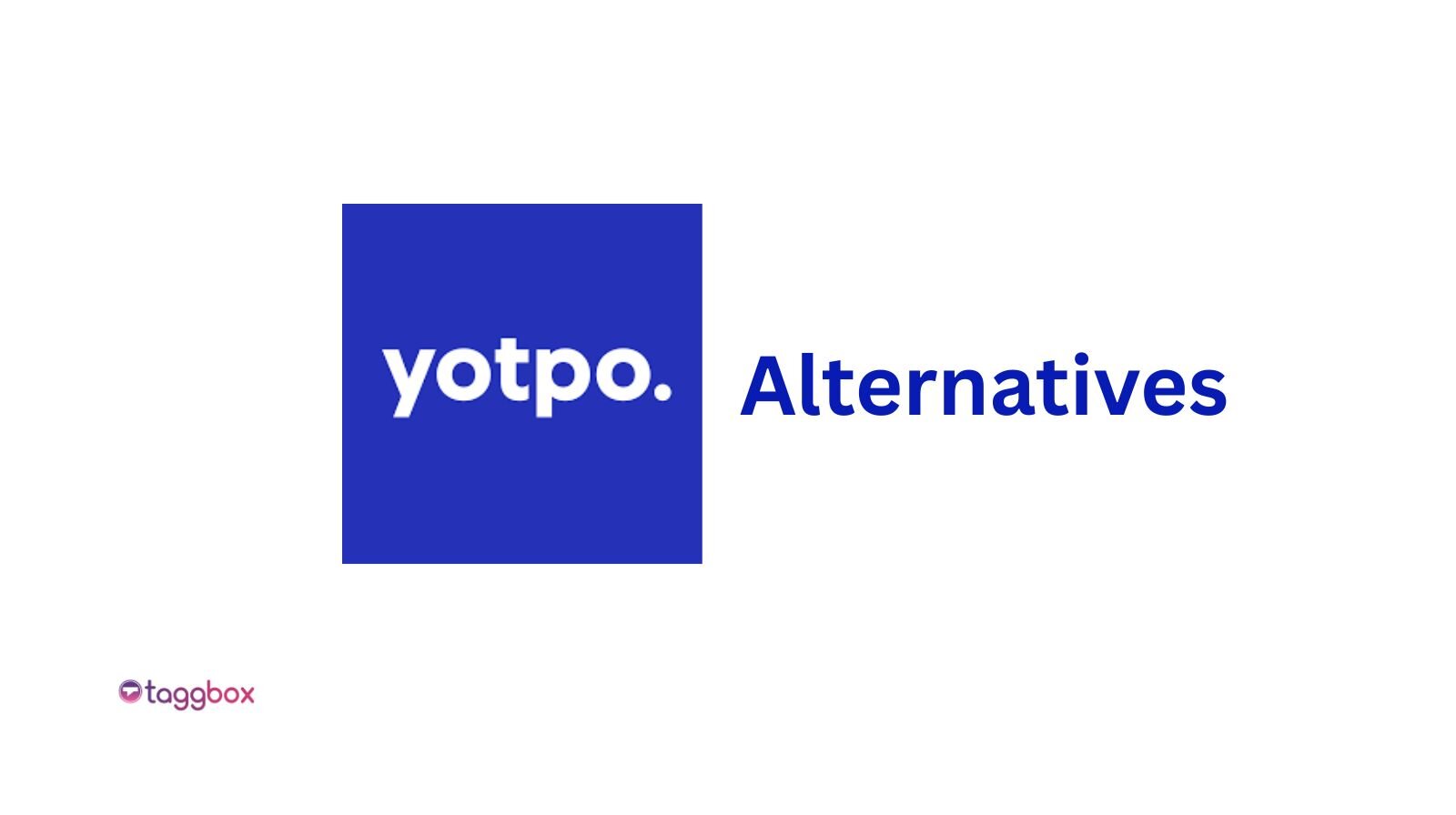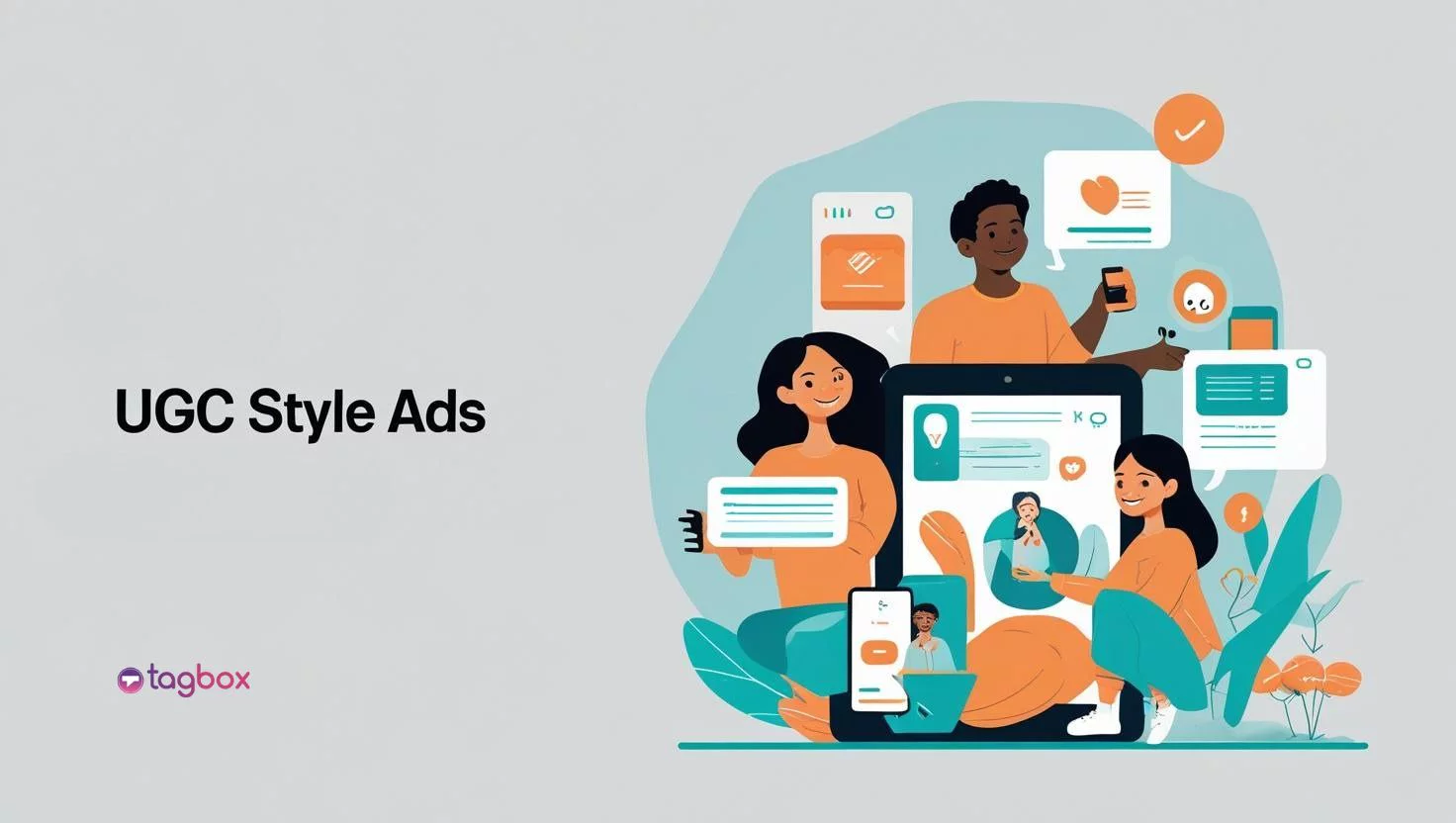Read summarized version with
Imagine scrolling through endless travel options, each vying for your attention. Suddenly, a campaign sparks your curiosity. A breathtaking video transports you to a glacier lagoon in Iceland.
A playful interaction lets you chat with a local in Sweden. These are the hallmarks of successful travel marketing: capturing your imagination, igniting your wanderlust, and ultimately convincing you to book that unforgettable trip.
In today’s competitive travel landscape, standing out from the crowd requires more than stunning photos and generic slogans. Travelers crave authenticity, unique experiences, and a connection with the destinations they visit.
This blog explores eight of the most captivating travel marketing campaigns of 2025. We’ll explore diverse approaches, from interactive technology to user-generated content, and uncover the key elements that fueled their success.
So buckle up and get ready to be inspired! These travel campaigns might spark the flame for your next incredible adventure.
1. Tourism New Zealand’s “100% Pure New Zealand”
The “100% Pure New Zealand” campaign is a travel marketing powerhouse, captivating audiences for over two decades. This long-running success story is a testament to the power of stunning visuals, emotional storytelling, and a clear focus on the destination’s unique selling proposition (USP).
Breathtaking Landscapes, Captivating Stories:
The campaign consistently delivers high-quality visuals showcasing New Zealand’s breathtaking natural beauty. From soaring mountains and glaciers to pristine beaches and lush rainforests, the imagery evokes a sense of awe and adventure.
But the campaign goes beyond just postcard-perfect scenes. Emotional storytelling is woven into the visuals, highlighting activities like kayaking through crystal-clear waters, bungee jumping over dramatic canyons, or simply soaking in the serenity of a geothermal hot spring. This approach taps into viewers’ emotions, making them yearn to experience the magic of New Zealand firsthand.
The Allure of Adventure:
New Zealand is synonymous with adventure travel. The campaign capitalizes on this by showcasing a wide range of activities, catering to adrenaline junkies and nature enthusiasts alike.
Whether it’s white-water rafting down a roaring river, heli-skiing untouched powder slopes, or exploring ancient caves, the visuals depict the thrill and excitement of a New Zealand adventure.
Key Takeaways for Your Travel Marketing:
The enduring success of “100% Pure New Zealand” offers valuable insights for travel marketers:
The power of visuals: High-quality visuals are essential for capturing attention and showcasing the beauty of your destination.
Storytelling that connects: Weave emotional storytelling into your visuals to create a deeper connection with potential travelers.
Highlight your USP: Focus on the unique experiences and offerings that set your destination apart.
By incorporating these elements, you can create travel marketing campaigns that resonate with your target audience and inspire them to embark on unforgettable adventures.
2. Icelandair’s “Inspired by Iceland”
While “100% Pure New Zealand” focused on breathtaking landscapes, Icelandair’s “Inspired by Iceland” campaign takes a different approach.
This innovative campaign, launched in 2025, uses short-form video content to showcase Iceland’s diverse experiences and foster a sense of personal discovery for potential travelers.
Short Films, Big Impact:
Instead of relying on traditional travel commercials, Icelandair opted for a series of captivating short films. Each film takes viewers on a unique journey, exploring different aspects of Icelandic life and culture.
We might see one film following a group of friends as they explore a hidden glacier lagoon, another capturing the awe-inspiring beauty of the Northern Lights, or perhaps a more reflective piece showcasing the tranquility of soaking in a geothermal pool surrounded by dramatic landscapes.
Connecting with the Individual Traveler:
The beauty of these short films lies in their ability to connect with viewers on a personal level. They don’t bombard us with generic travel slogans but focus on individual experiences.
We see real people having authentic experiences in Iceland, sparking a desire to create our own unique travel stories there.
The “Inspired by Iceland” campaign highlights the power of –
Short-form video content: Grab attention and tell impactful stories concisely and engagingly.
Focus on diverse experiences: Showcase the variety of offerings in your destination to cater to different travel styles.
Personal connection: Foster a sense of personal discovery and inspire viewers to create their travel narratives.
By following these takeaways, travel brands can create marketing campaigns that resonate with individual travelers and ignite a desire to explore their destinations.
3. The Swedish Number:
The Swedish Number campaign stands out for its uniqueness and interactivity. Launched in 2025, it defied traditional travel marketing strategies and captured global attention. Here’s what made it successful:
Dialing Up Curiosity:
The campaign revolved around a single phone number. Anyone, anywhere in the world, could dial this number and be connected to a random Swedish citizen. This element of surprise sparked curiosity and a sense of adventure.
Imagine picking up the phone and conversing with a local Stockholm resident about their favorite cafes, hidden gems, or the best places to see the Northern Lights!
Authenticity at its Finest:
The campaign’s brilliance lies in its authenticity. Travelers were kept from scripted marketing messages.
Instead, they had the opportunity to connect with real Swedes and gain genuine insights into Swedish life and culture.
These conversations fostered a personal connection with the destination, making it feel less like a brochure and more like a potential travel buddy.
Buzz and Beyond:
The Swedish Number campaign went viral, generating significant online buzz and media coverage. People shared their experiences on social media, piquing the interest of others and further amplifying the campaign’s reach.
This buzz translated into a surge in interest in visiting Sweden, proving the power of interactive and unexpected marketing strategies.
Travel Marketing Takeaways:
The Swedish Number campaign offers valuable lessons:
Think outside the box: Be bold and experiment with unconventional approaches to grab attention.
Embrace authenticity: Showcase your destination’s real people and culture to create a genuine connection with travelers.
Fuel engagement: Create interactive experiences that encourage user participation and social sharing.
By incorporating these elements, travel brands can move beyond traditional advertising and forge memorable connections with potential travelers, ultimately driving interest in their destinations.
4. KLM’s Hologram Bar:
Imagine waiting at the airport for your flight, feeling the usual pre-travel jitters. Suddenly, you stumble upon a bar unlike any other. A friendly hologram bartender greets you, offering traditional Dutch drinks and lively conversation about Amsterdam, your upcoming destination.
This wasn’t a scene from a sci-fi movie; it was KLM Royal Dutch Airlines’ innovative “Hologram Bar” campaign, a prime example of leveraging technology to enhance the travel experience.
Teleporting Travelers with Holographic Hospitality
The Hologram Bar, launched in 2025, utilizes cutting-edge holographic technology to create a truly unique experience. Travelers at select airports can interact with a life-sized hologram of a friendly bartender in real-time.
This bartender, projected from a hidden location in Amsterdam itself, could answer questions about the city, recommend must-see sights, and even share personal anecdotes, all while serving up virtual (but visually enticing) Dutch drinks.
More Than Just a Gimmick: Building Anticipation
The Hologram Bar wasn’t just a flashy gimmick. It served a strategic purpose. By offering a taste of Amsterdam pre-departure, the campaign aimed to:-
Build anticipation: Excite travelers about their upcoming trip to Amsterdam by showcasing its vibrant atmosphere and friendly locals.
Enhance the travel experience: Transform a potentially mundane airport wait into a memorable and interactive experience.
Promote Amsterdam as a destination: Leave a lasting impression on travelers, encouraging them to explore the city beyond the airport.
Lessons for Travel Marketers: Embrace Technology for Innovation.
The success of the Hologram Bar campaign highlights the importance of –
Embracing technology: Utilizing innovative technology to create unique and engaging travel experiences.
Focusing on pre-travel engagement: Enhance the journey from the beginning, not just at the destination.
Showcasing destination personality: Integrate elements that capture the essence and spirit of your location.
By following these takeaways, travel brands can leverage technology to create memorable touchpoints throughout the travel journey, fostering excitement and brand loyalty.
5. Singapore Tourism Board’s “Passion Made Possible”:
Singapore’s “Passion Made Possible” campaign, launched in 2017, steers away from typical tourist attractions and delves deeper. It focuses on the human spirit that drives Singapore’s success, forging an emotional connection with potential travelers.
Celebrating the People, Not Just the Places:
Instead of bombarding viewers with generic cityscapes, the campaign spotlights Singaporeans’ passion and dedication.
We see chefs meticulously crafting culinary masterpieces, artists expressing their creativity through vibrant murals, and entrepreneurs bringing innovative ideas to life. These stories showcase the heart and soul of Singapore, the drive and determination that fuels its constant evolution.
Building a Bridge Between Cultures:
The campaign fosters a sense of cultural connection by focusing on the people. Travelers see themselves reflected in the passion and energy of Singaporeans.
It’s not just a collection of sights to see; it’s a city brimming with life, where dreams are chased and possibilities are made real. This emotional connection transcends cultural barriers and makes Singapore a more relatable and inviting destination.
The “Passion Made Possible” campaign offers valuable insights:
Go beyond the scenery: Showcase the people, their stories, and their passions to create a deeper connection with travelers.
Highlight cultural relevance: Make your destination relatable by showcasing shared human experiences and aspirations.
Evoke emotions: Travel marketing is not just about information but sparking emotions and inspiring dreams.
By incorporating these elements, travel brands can move beyond generic advertising and create a space where travelers can connect with the human spirit of a destination, fostering a desire to experience it firsthand.
6. GoPro’s User-Generated Content:
GoPro doesn’t need a flashy advertising campaign to promote its products. Instead, it leverages a powerful marketing strategy: user-generated content (UGC).
Authenticity at its Core:
The beauty of GoPro’s approach lies in its authenticity. They empower their audience, a community of passionate adventurers, to become storytellers.
These users showcase their incredible experiences traveling the globe through breathtaking videos and photos captured on GoPro cameras.
From heart-stopping skydiving adventures to serene underwater encounters, this UGC paints a vivid picture of the possibilities with a GoPro.
By featuring user-generated content, GoPro achieves several things:
Stronger brand association: Seeing real people using GoPros in stunning locations creates a robust association between the brand and adventure travel.
Increased trust and credibility: Travelers trust the authenticity of user-generated content more than traditional advertising.
Community building: Showcasing user content fosters a sense of community among GoPro users, where they can share their passion for travel and adventure.
GoPro’s success story offers valuable lessons for travel brands:
Tap into the power of UGC: Encourage your audience to share their travel experiences captured with your brand.
Focus on authenticity: Authenticity resonates with travelers. Let your customers be your storytellers.
Build a community: Foster a community around your brand to create brand advocates.
By empowering your audience and leveraging user-generated content, you can create a powerful and authentic marketing strategy that inspires travelers and positions your brand as a trusted companion on their adventures.
7. Airbnb’s “Live There”:
In 2025, Airbnb launched its innovative “Live There” campaign, taking experiential marketing to a whole new level. This campaign offered a unique opportunity for a select group of participants to truly live like a local in some of the most sought-after Airbnb listings worldwide.
Beyond the Tourist Trail:
“Live There” wasn’t about ticking off tourist attractions. Instead, it offered participants the chance to immerse themselves in local life. Imagine spending a week in a charming Parisian apartment, exploring hidden cafes and bustling markets alongside your Parisian host.
Or picture yourself nestled in a traditional Japanese ryokan, experiencing the serenity of a tea ceremony and the beauty of a local garden. These immersive experiences offered a glimpse into the heart and soul of a destination, going beyond the typical tourist experience.
A Treasure Trove of User-Generated Content:
This experiential campaign wasn’t just about the participants; it also generated a wealth of user-generated content (UGC). Participants documented their unique experiences through photos, videos, and blog posts, showcasing the diverse offerings of Airbnb listings and the authentic local experiences they provided.
This UGC became a powerful marketing tool, inspiring others to dream of their unique travel adventures.
The success of “Live There” offers valuable insights:
Experiential marketing matters: Create unique and memorable experiences for potential travelers to showcase your offerings.
Leverage the power of UGC: Encourage participants to document their experiences and share them with the world.
Focus on local immersion: Provide opportunities for travelers to experience the true essence of your destination, not just the tourist hotspots.
By incorporating these elements, travel brands can move beyond traditional marketing and create unforgettable experiences that inspire wanderlust and drive bookings for unique and authentic accommodations.
8. World Wildlife Fund’s “Adopt a Reef”:
The World Wildlife Fund’s (WWF) “Adopt a Reef” campaign launched in 2025 proves that travel marketing can be impactful and inspiring.
This gamified campaign targeted eco-conscious travelers, fostering a sense of responsibility and connection with the world’s precious coral reefs.
Gamifying Conservation:
The campaign offered a unique twist on traditional travel experiences. Instead of booking a vacation package, individuals could “adopt” a pixel of the Great Barrier Reef through the WWF website.
These virtual adoptions came with the ability to track the progress of reef restoration efforts and see how their contribution was making a difference.
This gamified approach raised awareness about the plight of coral reefs and allowed individuals to feel a sense of ownership and accomplishment in their conservation efforts.
Sustainable Travel for a Healthy Planet:
“Adopt a Reef” subtly promoted sustainable travel practices. By focusing on coral reef conservation, the campaign highlighted the importance of responsible tourism and the delicate balance between travel and environmental protection. It encouraged viewers to consider their travels’ impact and choose sustainable destinations.
The WWF’s “Adopt a Reef” campaign offers valuable takeaways for travel brands:
Align with a social cause: Partner with environmental or social causes to attract eco-conscious travelers and showcase your commitment to responsible tourism.
Gamification for engagement: Use gamified elements to create a more interactive and engaging experience for potential travelers.
Highlight sustainability: Showcase your destination’s commitment to sustainable practices and eco-tourism initiatives.
By incorporating these elements, travel brands can appeal to a growing segment of environmentally conscious travelers and contribute to a more sustainable future for tourism.
This concludes the breakdown of all eight travel marketing campaigns. We’ve explored diverse approaches, from interactive technology to user-generated content, highlighting the key elements that fueled their success.
Hopefully, these campaigns inspire you to think outside the box and create travel marketing strategies that ignite wanderlust and make a positive impact!
Explore also – What is Destination Marketing
Conclusion:
Forget generic slogans! Travelers crave authentic experiences. This blog explored captivating 2025 campaigns that did just that.
Critical takeaways for travel marketers:
- Tell emotional stories. Connect with viewers on a deeper level.
- Embrace tech. Create unique experiences with cutting-edge tools.
- Highlight the human side. Showcase the people and their passions.
- Empower your audience. Leverage user-generated content.
- Craft unforgettable experiences. Let travelers live like locals.
- Align with a cause. Showcase responsible tourism efforts.
Inspire wanderlust and make a positive impact. Your next marketing masterpiece awaits!

